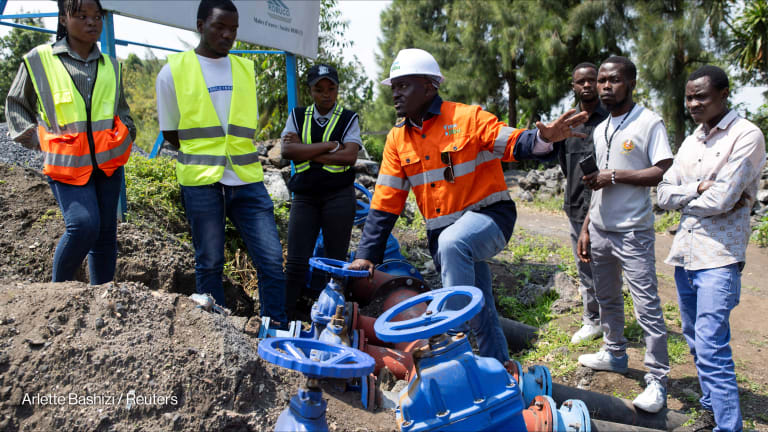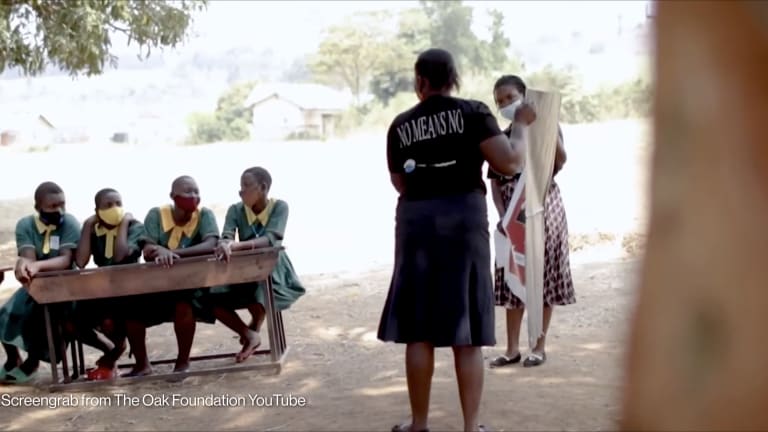USAID acquisition spending: How much went to local partners?
The agency disbursed $147 million to local partners in lower-, middle-, and upper-middle-income countries in 2020. One African country got over 60% of the portion.
Over recent weeks, Devex has looked into the United States Agency for International Development’s local spending — following up on from a landmark commitment by Administrator Samatha Power to commit 25% of all funding to local actors. Last week’s article looked at the proportion of USAID assistance awards going to local organizations. This week Devex has carried out a similar analysis on acquisition funding. Based on data from USASpending, the agency disbursed over $6 billion through contracts in the fiscal year 2020. We found that just $147 million, or 2.4%, went to local organizations based in lower-, middle-, and upper-middle-income countries. More than half of all local contracts funding went to just one partner. Overall, USAID disbursed $147 million to 387 local organizations based in 56 LMICs — as well as upper-middle-income countries — for over 800 activities in countries where they were based. Another $851,500 went to 102 LMIC-based organizations for contracts in other countries. The overall figures show that contracts are significantly less likely to be awarded to local organizations than other sources of funding. For comparison, last week’s analysis found that USAID spent around $15.1 billion in 2020 on assistance awards, and that between 7% and 8% of this went to local organizations. In her speech, Power said that 6% of all funding went to local organizations. When assistance and acquisition spending is totalled, our analysis is in line with this figure. The impact of subcontracting While local organizations won relatively few prime contracts, they received additional funds through subcontracting. The bulk of USAID funding went to U.S. contractors, worth $3.1 billion for 3,078 contract disbursements. But a closer look at some of the overall largest awards revealed that while the U.S. is listed as the place of performance for these activities, they are part of global or regional projects, such as the Global Health Supply Chain Program implemented by Chemonics International. We also found that Chemonics procured goods and services from a mix of local and international contractors through subawards. Other top U.S.-based contractors are well-known organizations: DAI, Social Solutions International, Remote Medicine, and The Palladium Group. It is highly likely that similar to Chemonics, these organizations engaged with local and international organizations through subcontracting. Where is localization concentrated? Kenya was the biggest recipient of contract disbursements implemented by local organizations with $91.2 million — twice as much as the rest of the top 10 recipient countries received. The state-owned Kenya Medical Supplies Authority, or KEMSA — the overall top local contractor from LMICs — accounted for almost 99% of this amount, while the remaining was divided among 12 other contractors. South Africa, Jordan, Egypt, and Zambia were among the other top recipients, with a total of $28.3 million for 120 activities awarded to 56 local organizations. Among the top 10 contractors, three are affiliated with international organizations. These include a local office of U.S.-based company TransCentury Associates Inc.; the Cipla Foundation, which is connected to Indian business Cipla; and John Snow Health Zambia Ltd., affiliated with John Snow Inc. in the United States. The rest of the top 10 LMIC-based awardees are “genuine” local organizations, with state-owned KEMSA winning over three times more than the other top contractors. Few countries had more than one large local contractor. For instance, the Association of Private Health Facilities in Tanzania, Catalyst Management Services, and KEMSA all won over 96% of the local awards in their countries. Berytech won all the local contracts in Lebanon. All the other recipients received more than 50% of the disbursement. The biggest contracts were mostly health-related, ranging from project implementation, construction of health facilities, to supporting medical supply chains. Some of the top contract disbursements include: • Four contracts worth $90 million awarded to KEMSA as part of the $650 million KEMSA Medical Commodities Program. • $4.6 million awarded to MTN Cosmo-Net for mobile devices and accessories to be used for the COVID-19 response in South Africa. • $3.3 million awarded to the Association of Private Health Facilities in Tanzania to support voluntary male circumcision services in the country. • $3 million awarded to Catalyst Management Services for COVID-19 containment and mitigation measures in India. • $2.8 million awarded to the Queen Rania Teacher Academy for the teacher education program in Jordan. David Ainsworth and Janadale Leene Coralde contributed to this article. Update, Dec. 6, 2021: This article was amended to clarify that John Snow Health Zambia is an independent organization affiliated with JSI. Try out Devex Pro Funding today with a free 5-day trial, and explore funding opportunities from over 850+ sources in addition to our analysis and news content.
Over recent weeks, Devex has looked into the United States Agency for International Development’s local spending — following up on from a landmark commitment by Administrator Samatha Power to commit 25% of all funding to local actors.
Last week’s article looked at the proportion of USAID assistance awards going to local organizations. This week Devex has carried out a similar analysis on acquisition funding.
Based on data from USASpending, the agency disbursed over $6 billion through contracts in the fiscal year 2020. We found that just $147 million, or 2.4%, went to local organizations based in lower-, middle-, and upper-middle-income countries.
This story is forDevex Promembers
Unlock this story now with a 15-day free trial of Devex Pro.
With a Devex Pro subscription you'll get access to deeper analysis and exclusive insights from our reporters and analysts.
Start my free trialRequest a group subscription Printing articles to share with others is a breach of our terms and conditions and copyright policy. Please use the sharing options on the left side of the article. Devex Pro members may share up to 10 articles per month using the Pro share tool ( ).
Miguel Tamonan is a Senior Development Analyst at Devex, where he analyzes data from public and private donors to produce content and special reports for Pro and Pro Funding readers. He has a bachelor’s degree in Political Science with a Major in International Relations from the Polytechnic University of the Philippines.








